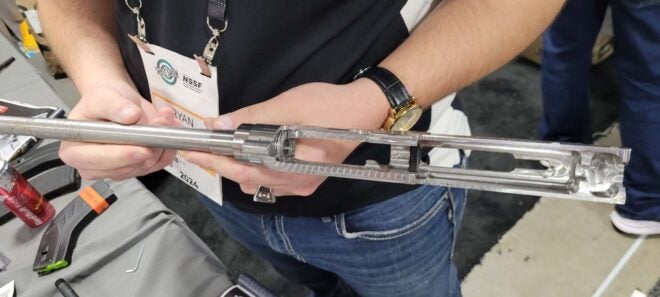In an innovative move for 2024, Canadian engineer Ryan Pearce has developed the SK-X, a modernized take on the classic SKS rifle. Pearce has engineered a new-model SKS-style action rifle that preserves the recognizable features of the original while introducing a myriad of new upgrades.

At first glance, the SK-X shares the same basic operating principles with the traditional SKS, however, a closer inspection reveals an extensive list of changes that distinguishes this new rifle from its predecessor. From a new gas block and gas system to a new sight block, the SK-X has been meticulously created for the modern era. Perhaps the most outstanding feature is the new 1/4-turn safety and the entirely renovated stock/chassis, a testament to Pearce’s innovative prowess.
The production of SK-X takes place in South Carolina using industry-standard 4140 steel for the receiver and 4130 steel for the barrel, both sourced from KAK Industries. In its current form, the SK-X sports an 18.5-inch barrel, but there are plans for other options. Pearce is considering a 20-inch or a 16-inch version and is open to exploring calibers other than the classic 7.62×39.

“If it can fit in a STANAG mag, we’ll build it for you,” says Ryan Pearce, demonstrating his commitment to meeting the expanding demands of the global firearms scene. The specs of the SK-X demonstrate this mindset, with features including an SKS long-stroke gas action, an 18.5-inch barrel, and compatibility with STANAG magazines.
Nonetheless, it’s important to underscore that while the SK-X has prototypes in existence and is pulling its weight in regulatory hoops, there isn’t any guarantee of production in the immediate future. For enthusiasts willing to bet on this firearm, there is a pre-order option available at $1,750 on the SK-X’s official website, SKXRifles.com.


In redefining the classic SKS, this project is a courageous step forward in the firearms industry. It reflects how historic models can serve as stepping stones for innovation while still preserving the core principles that made them iconic in the first place, showing a promising prospect for the future of firearms development.
 Your Privacy Choices
Your Privacy Choices![[SHOT 2024] SK-X: Building A Better SKS In 2024](https://www.thefirearmblog.com/blog/wp-content/uploads/2024/01/Compress_20240125_213202_2206-660x297.jpg)